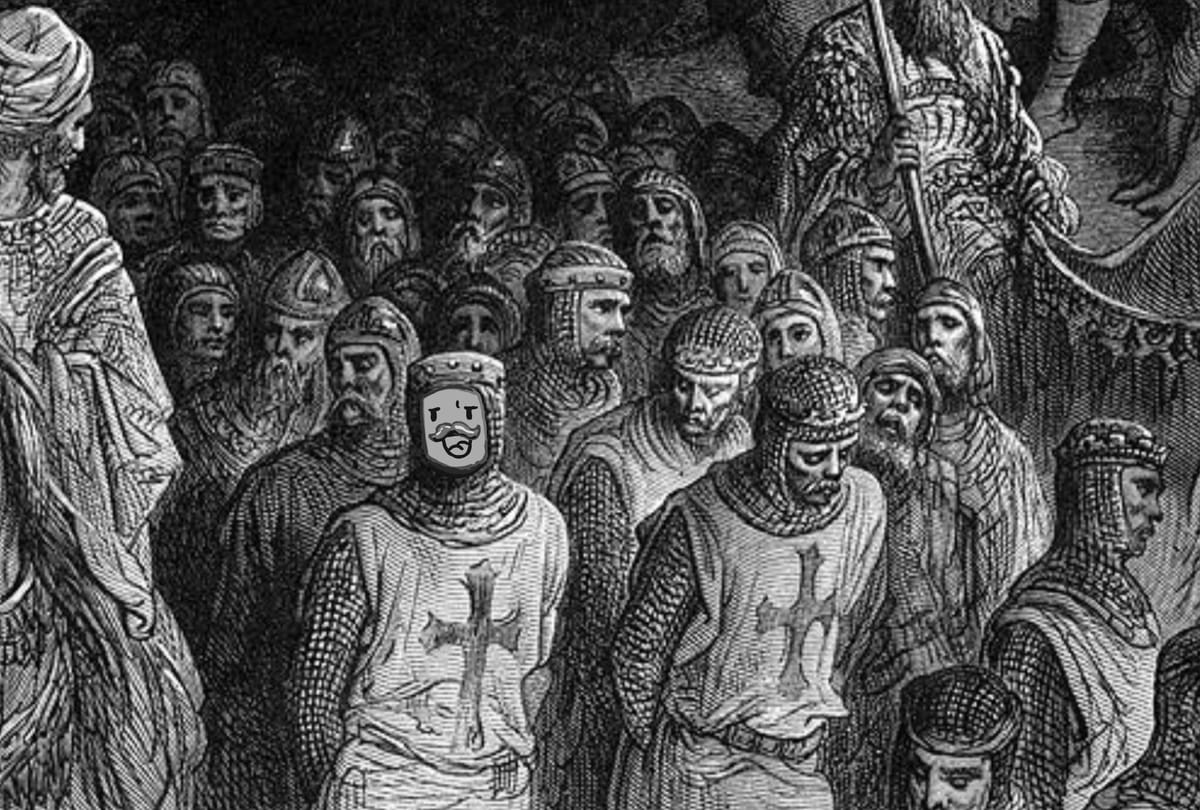What are Phantom Cogs?
How they work, why they exist, and where you'll find them in rpgs.

Games are built on other games, and sometimes, they're haunted by them. For the last decade, I've struggled with certain roleplaying games and had no vocabulary to explain why. This article is me wrestling with that.
This is all provisional thinking. Taxonomy is, and will always be, about the examination—the conclusions are not the point. There might even be a name for this concept already. I just haven't found it. So, consider this a modest proposal for our vocabulary, new or updated.
Hey, future-past Clayton here. It looks like The Alexandrian describes something tangentially related called "Diassociated Mechanics." They share similarities but have some fundamental differences. Phantom Cogs are more obsessed with the user experience. What defines a phantom cog is its inelegance and the way it "feels" when using it. I also expand my possibilities by describing them as mechanics, rules, and procedures.
Even further afield, and even more interestingly, is Jay Dragon's article on the mechanics that don't get used during play. I won't attempt to sumarize what Jay's written. Why do that when the original is already so good?
The Phantom Cog
First, let's make some assumptions. Roleplaying is a tangled ball of physical, mental, real, and imagined things. Those "cogs" can play a million different roles, so categorizing them by their relationships or exact function—while interesting—is outside the realm of this article. Instead, (for this article) when we talk about "cogs" we mean anything in a roleplaying game that is written down.
In other words, the house rules passed down in the oral tradition are off the table. (Thank god. Imagine how much more complicated and fuzzy that would be!) Instead, I want to discuss written rules, mechanics, and procedures I call "phantom cogs." Think of them like the gears hidden behind Oz's curtain.
Here's the rough definition:
A phantom cog is any rule, mechanic, or procedure in roleplaying games that doesn't relate to the imagined world, its characters, or audience and instead obfuscates or manipulates other rules, mechanics, and procedures. It's most often identified by its inelegance and sense of redundancy.
Put another way, phantom cogs are inelegant or "extra" mechanics that only relate to other cogs. Their existence isn't just invisible to the fiction—they exist entirely separate from it as a construct for other rules. They're the ghosts in the machine.
What phantom cogs are not:
Phantom cogs are not defined by how mechanical or abstract they are. For example, even though a rule might live entirely in a player's head or deal with numbers exclusively, that doesn't necessarily make it a phantom cog. The deciding factor is its relationship to the fiction itself.
- Difficulty Class. These relate to and describe (in a quantified fashion) the relationship between objects and the conflict they pose to characters. For example, a difficulty class on a pit trap still describes the imagined pit trap. Therefore, it's not a phantom cog.
- GM Moves. Procedures like "Reveal an unwelcome truth" don't directly impact the story but trigger an interpretation and revision of the fiction. Despite being indirect and non-specific, they are not phantom cogs.
- Advantage/Disadvantage. The order of operations doesn't determine if something is a phantom cog. Determining advantages and disadvantages might start in the fiction, but its outcomes never become unrelated or severed from that fiction. It is not a phantom cog.
What phantom cogs are:
Arbitrary. If I'm being honest, phantom cogs are noticeable by how extra they feel. If a mechanic can be replaced or removed without impacting the game. It's a phantom cog.
- D&D 5E Ability Scores. Yes, they rate a character's abilities. In earlier editions, the ability score was tested directly on saving throws. Today, however, a character's ability score (ranging from 3-18) has little to no application in play except to generate modifiers. It's the modifier that relates to the roleplaying. D&D's ability scores. meanwhile, are mostly an artifact that stuck around because they allow for a randomly generated bell curve of results. They're phantom cogs because they live beyond the random roll table in character creation and exist on the character sheet. They have no immediate rules or bearing on the fiction. And their function as a comparative metric is separate from rules during play.
- Numenera's Difficulty Scale. In the game Numenera, the GM assigns challenges a difficulty rating between 1 and 10 that players test their skills against. This system is meant to "simplify" the D20 practice of determining difficulty classes (DCs), which could range anywhere from 0 to 30. However, when players roll against the difficulty rating, they consult the difficulty scale, which gives them a traditional roll-over DC between 1 and 30. In other words, it's the old system with an extra step. If you want to "mechanize" the fiction, you convert it to DC and then to a difficulty scale. If you want to narrate the mechanics, you convert the difficulty scale into a DC. It is a stop-gap that connects two adjacent things but is arbitrary or meaningless without either.
- AD&D 2E's THAC0. In the 90s, when the second edition of Advanced Dungeons & Dragons reigned supreme, you didn't have the roll-over armor class we have today; you had a stat called "To Hit Armor Class Zero." Commonly referred to as THAC0 (pronounced by many as "THACK-OH"). If you want to know how it works, check out the D&D Wiki article. Here's why it's a phantom cog—it is a shorthand that combines the level and abilities of your character (which are separate cogs) into a stat that is subtracted from by your foe's armor class (another cog). The result is a target number you're trying to roll at or above.
Don't get me wrong. The purpose of THAC0 isn't bad, and for many people, it helped us intuit what D&D was modeling and placing importance on. By comparison, AD&D 1E's charts were more opaque.
The problem is that the THAC0 (the number you're trying to roll at or above) is only half done. It still needs to be modified by your enemy's AC, and then your roll is still modified by other factors like your weapons. In later additions, they made the combat procedure addition-only, but more importantly (in my opinion), they encapsulated the target number on one side of the engagement. You no longer had to piece together the target number from your character sheet and the enemy's stat block. Later editions removed that extra step by making your character's level and abilities another additive modifier alongside your weapons and gear.
What causes phantom cogs?
Let's assume you agree with me and believe in phantom cogs. I have two reasons why I think these noodle-y steps end up in games.
- Artifacts from previous designs. I like this potential cause because it makes the name "phantom cogs" more literal. At one point, whether in a previous edition or a phase in development—the phantom cog lived as something else before those rules, mechanics, and procedures died off.
- Daisy-chaining into a system. One of the hallmarks of a phantom cog is that it can be removed with a redesign, but what if the designer doesn't want to redesign? If the phantom cog makes the other cogs "work" without making them fundamentally different, then its existence becomes necessary.
- A desire for friction. Sometimes, you want the extra steps. Especially if the way we do the "non-fiction" part of roleplaying is meant to create a mood or sense of pacing. I can see a situation in a Star Trek-like rpg where you'd want phantom cogs that require the participation of other players—kind of like how a ship's crew might consult several crew members before firing the torpedos.
How common are phantom cogs?
Phantom cogs are rare! In the early 2000s, phantom cogs were more common. In the "traditional" game space, for example, excessive crunch was a defining feature in roleplaying games and the general public was more forgiving of them, either due to tastes or simply not knowing there was an alternative. That environment made phantom cogs more inconspiquous—even desirable.
Today, most phantom cogs are "designed out" of games for being redundant or unproductive toward the game's overall goals. It would require special circumstances for a phantom cog to survive the design process intentionally or unintentially.
Final Thoughts
Are phantom cogs bad? Not objectively. Designations like "good" and "bad" are reductive in this context. In some cases, I think the phantom cog is useful. Sometimes, you want that extra friction in the mechanics, and sometimes, that cog is deemed aesthetically important to the game's overall image or mood.
But... (Here's the heel turn.)
Most of the time, phantom cogs are inelegant game design. Or, at the very least, unsatisfying to deal with. I can only speak for my table, but over here in [redacted], every micro-second not narrating or playing pretend counts. If a phantom cog makes assessing a die roll a quarter of a second longer—it makes me want to remove it.
But I'm a designer of the Deiter Rams variety. I want as much design as is necessary and no more. That particular illness makes me prone to questioning everything (and trying to redesign everything). How can I make this system more one-to-one with the fiction? How can I make a phantom cog essential via aesthetics? Is there a way to capture those same benefits with one fewer gear in the box? I love thinking about this stuff.
Thanks for reading, as always.
Similar articles from the Explorers' vault.


Explorers Design is a production of Clayton Notestine. If you liked this article, please consider liking, sharing, and subscribing. Members who pay just $5/month also get unlimited access to templates, tools, and resources.





